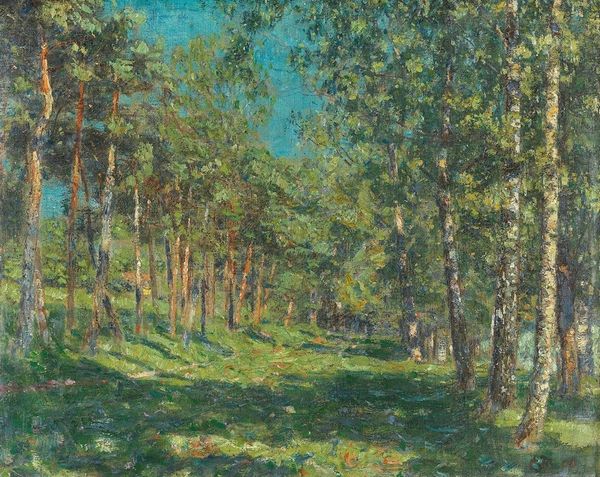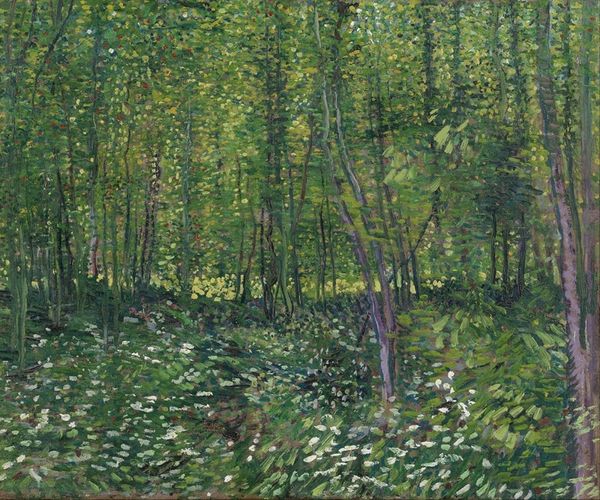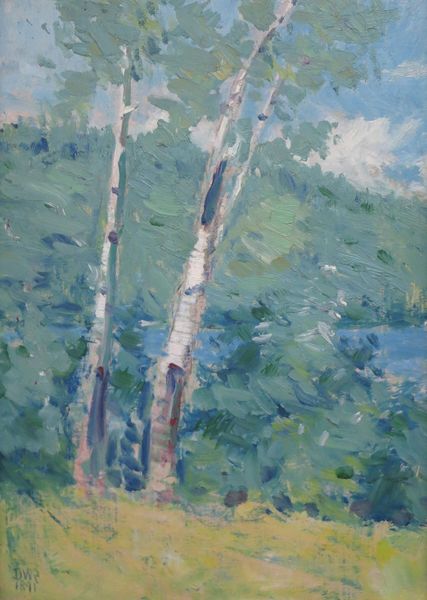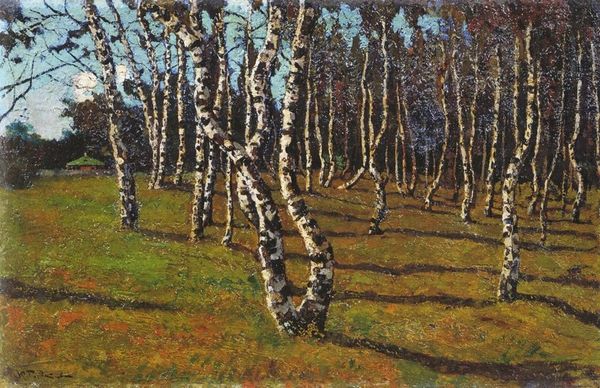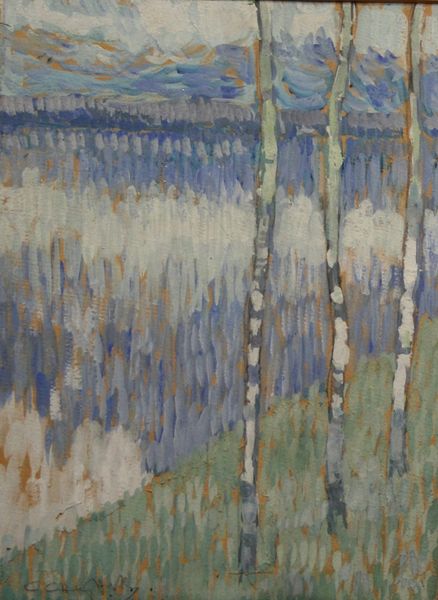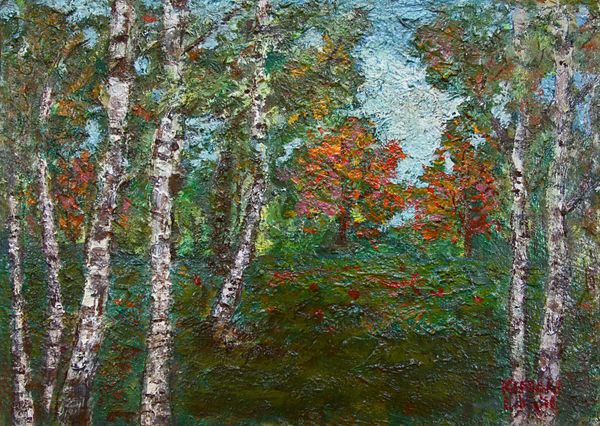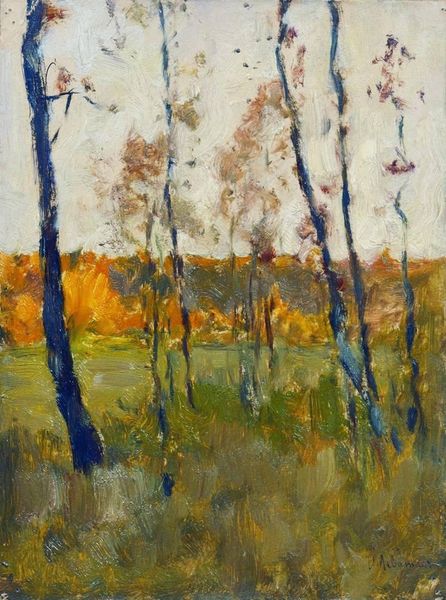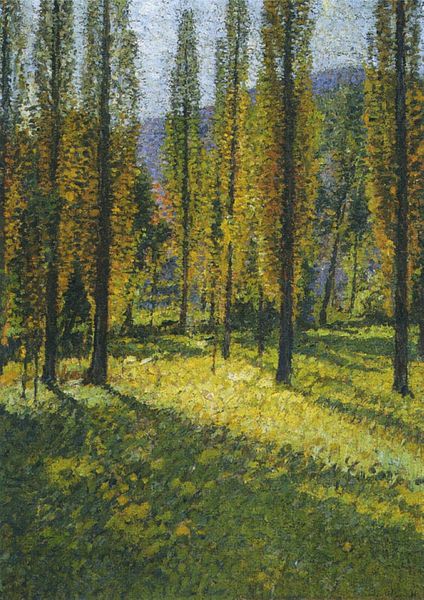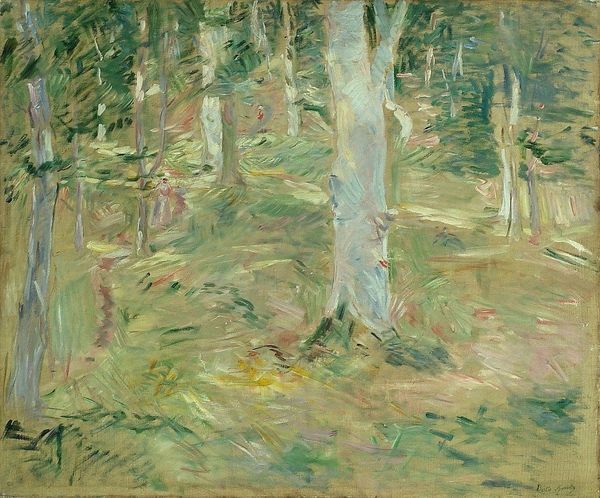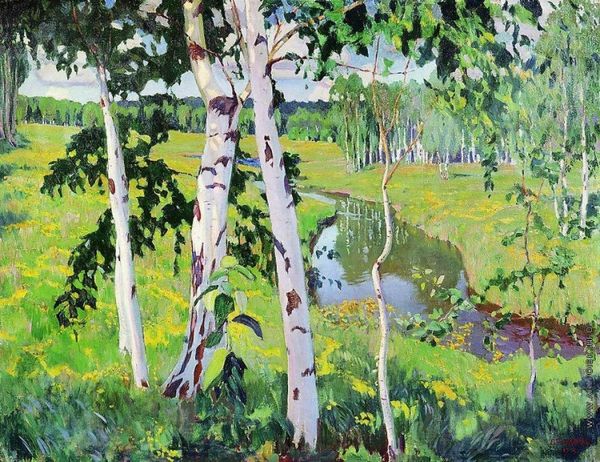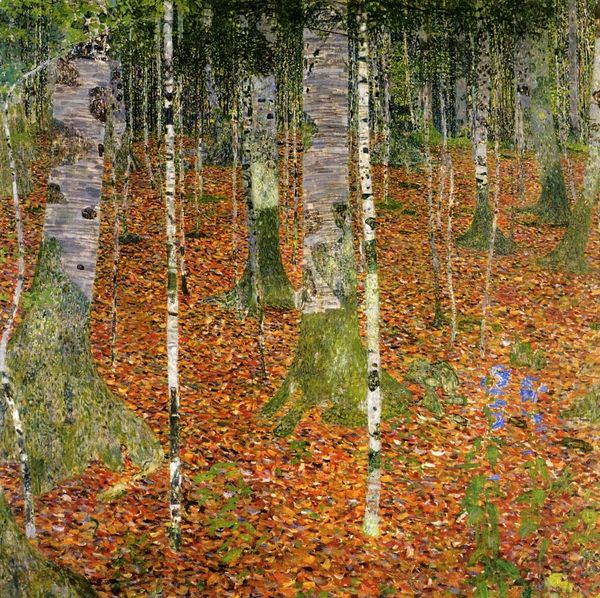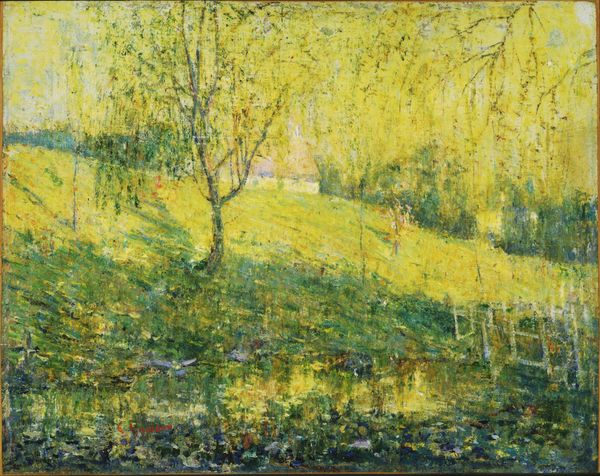
Copyright: Public Domain: Artvee
Editor: Here we have Carl Moll’s "Birkenwäldchen im Abendlicht," or "Birch Grove in Evening Light," painted in 1902 using oil paint. The grove feels incredibly still and tranquil, almost dreamlike. What can you tell me about it? Curator: This work strikes me as a powerful commentary on the evolving role of landscape painting at the turn of the century. Note how the repetitive verticality of the birch trees, typical of symbolism and impressionism, moves the viewer's eyes up. However, where does that upward gaze lead? Not to a dramatic sky, but to a very pale horizon, suggesting the restriction on an individual within modern institutions. Editor: I see what you mean, but is it not a bit of a stretch? What restrictions are implied by just the simple arrangement of vertical tree trunks in a painting? Curator: Think about the context of Vienna at the time, its Secession movement, and the drive to create art for the people, not just the elite. Does this rather tame view not feel somewhat…institutional? The controlled brushstrokes, the almost grid-like composition; is Moll showcasing the natural world, or re-framing how one is meant to "see" it through societal conventions of exhibiting art? Editor: That is a fascinating way to consider it, the birch trees not just as trees, but also the limitations to a wider artistic vision… Curator: Exactly. How are we expected to experience nature, understand it? By putting them on display? It highlights the push and pull between raw expression and societal expectations in early modern art, doesn't it? Editor: Absolutely, I hadn’t considered the implications of the social context on how even landscapes are viewed and painted! It provides a richer understanding than just its face value. Curator: Indeed, the true value often lies beneath the surface of our immediate viewing.
Comments
No comments
Be the first to comment and join the conversation on the ultimate creative platform.

